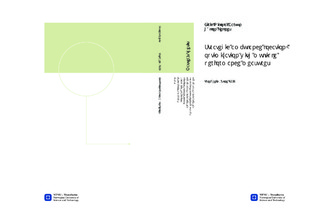| dc.description.abstract | Emergency medical services (EMS) have been of interest for operations research since the middle of the 1960 s. Since then there have been published numerous articles on the location of ambulances stations, allocation of ambulances, dispatching of vehicles, re-deployment of ambulances and evaluation methods. This thesis presents a new problem for the location of ambulance stations and allocation of ambulances in heterogeneous regions, referred to as the Maximum Expected Performance Location Problem for Heterogeneous Regions (MEPLP-HR). The problem applies multiple performance measures as well as station specific probabilities for the availability of ambulances at a station. Compared with earlier problems, the MEPLP-HR is more realistic for heterogeneous regions as the service rate of ambulances in the problem depends on the area a station covers. A mixed integer linear model is proposed to solve the problem. The probability for available ambulances is found by utilizing queuing theory together with the service rate and arrival rate of calls for each station. In contrast to recent models, the probability for available ambulances is calculated within the model. Hence, it is not necessary to use iterative solution approaches. The formulation is strengthened using valid inequalities and a reformulation of a restriction. With the strengthening constraints, both the solutions and the best bounds are improved.The computational studies are performed on the heterogeneous region of Sør-Trøndelag in Norway. For this region, the model is able to find a realistic solution that has a higher expected performance than the current solution on each of the given performance measures. The model is also tested with different weights for the performance measures, with the conclusion that the weights significantly affect the locations and allocation of stations and ambulances. By using the model as a decision support tool, three real managerial cases are analyzed together with potential solutions. The first case concerns the importance of taking multiple time periods into account when planning. The results from the computational study indicate that it is sufficient to plan for the busiest period. The second case analyzes the consequences and potential mitigating actions for closing down a local emergency room (ER). By closing the local ER, the travel time to ER will increase significantly for the zones close to the local ER. However, adding an extra ambulance and ambulance station can to some degree mitigate this effect. The third case concerns the benefit of transferring all non-urgent transport calls to designated non-urgent transport vehicles. The analysis in this case shows that there is a potential to reduce the number of ambulances by one fifth if designated non-urgent vehicles are introduced.This thesis consists of a report and two articles. The report is the main part of the thesis and contains all of our results and analyses. The articles are found as separate works after the report. The first one, "Strategic ambulance location for heterogeneous regions", presents the problem, the proposed model and technical characteristics. The second article, "Strategic Emergency Medical Service Planning - Three Case Studies", presents how the model can be applied as a decision support tool. The articles are based on the report, hence the report and articles are to some degrees overlapping. | nb_NO |

